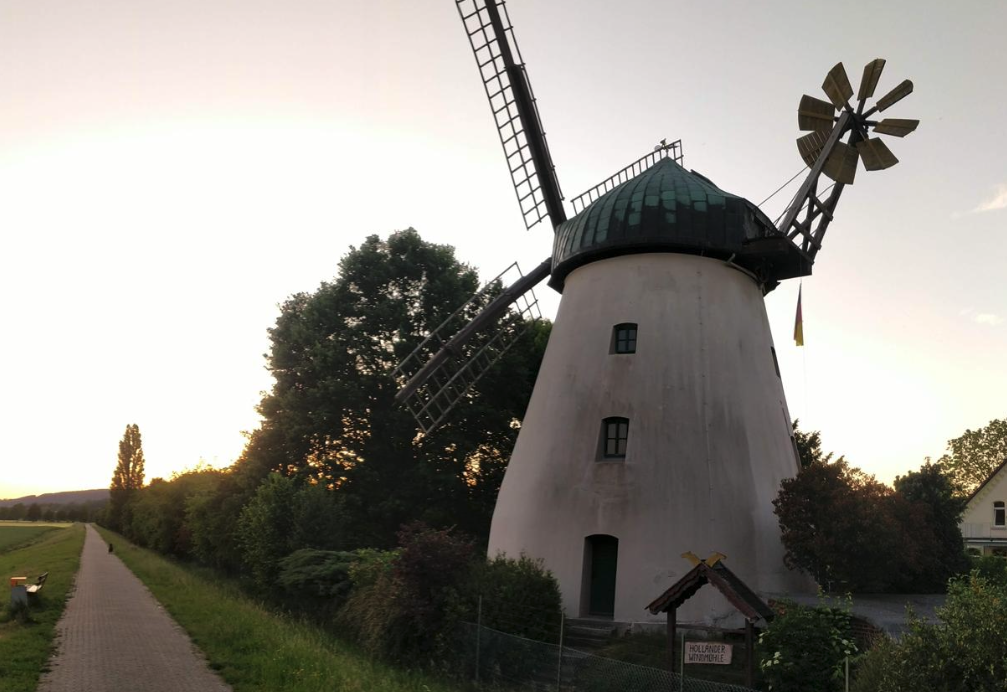History of the Windmill in Tündern
The so-called Dutch windmill on the Weser embankment in Tündern was built in 1883. At first, the village's four bakeries obtained their flour directly from the mill. Until 1960 grain continued to be milled there for animal feed. Originally powered by wind, a motor was installed in an outbuilding as early as 1921 – an early step toward independence from wind and weather.
From decay to rescue
After the Second World War the mill began to fall into disrepair. Only with the founding of the local heritage association “Tundirum” in 1974 did a new era begin. Thanks to numerous donations the mill was reopened in 1979 with a new roof and fresh plaster. But a year later, on the evening of 19 July 1980, lightning struck. The mill was almost completely destroyed by fire – roof, fantail, cap and milling machinery were lost. Thanks to tremendous commitment and many helping hands, reconstruction was completed by 1981. Since then it has been regarded as a landmark of Tündern and a popular waypoint on the Weser Cycle Route.
Today: A monument in need
But today the ravages of time are gnawing at the windmill: - The wooden blades are rotten - The plaster is weathered - The masonry is damaged A comprehensive restoration is therefore urgently required to preserve this cultural heritage and make it accessible to the public again.

Mills in fairy tales, legends and stories
The windmill in Tündern lies not only on the Weser Cycle Route, but also on the famous German Fairy Tale Route. Have you noticed how often mills appear in old stories? Whether in the Grimm tales like “Puss in Boots” or “Rumpelstiltskin”, or in legends such as “Krabat” – the miller's trade always played a role. In earlier times, millers were seen as mysterious figures. Mills often stood apart from villages, outside social control. Many believed robbers would hide there – and indeed the profession of miller was long held in low esteem. Only in the 19th century did the image change: mills became a symbol of food security and technical innovation. The windmill in Tündern is also such a cultural treasure well worth preserving.